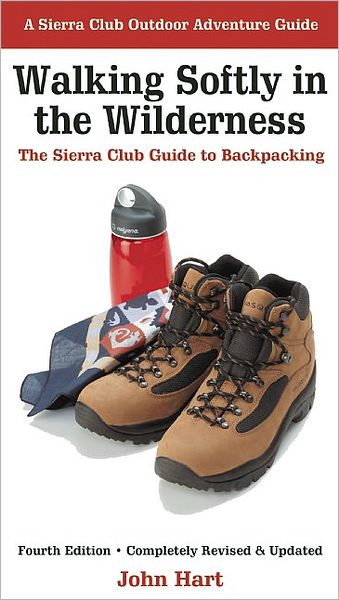
EXCERPT
The principles of low-impact hiking and camping are not complex. There are, indeed, varying problems from region to region, from landscape to contrasting landscape. There are questions different experts answer differently. There are subtleties to wander in. Yet for conscientious backpackers, certain imperatives are clear.
We don’t camp on vegetation. This is a hard one; it seems to run against some instinct out of the Stone Age. The novice hurries to make camp on the grass at the edge of the water or—a second choice—on the grass at the edge of the forest. Most experienced hikers have gotten the word that lush meadows are fragile (also damp, cold, and full of mosquitoes). It’s not so widely recognized that some other types of vegetation are even more vulnerable. Short of learning a lot of botany, you can fall back on a simple principle: don’t camp on green things at all. You can almost always find bare ground to settle on. Even in steep terrain, three or four people can usually locate a flat, pleasant, unvegetated spot.
We take the landscape as we find it. The perfect camp is found, not made. If you want a developed campsite, choose an established one. If you pitch a tent, find a site with natural drainage. Don’t cut limbs, dig ditches, pound nails, pile stones. The game is preservation, not pioneering.
We carry out all our trash, including uneaten food. Hikers are pretty careful these days about outright litter, but some still think it good practice to bury or scatter food they cannot consume. Not any more. Whatever isn’t readily, completely burned must go out the same way it arrived—in your pack.
We carry stoves and are sparing with fire. This is one of the more complicated matters: see Chapter 18. But note that in many wild areas, fires are allowed only at certain sites or in certain zones or in certain seasons. A light, portable stove gives you much more freedom to camp where you like.
We go along with agency advice. All land management agencies have lists of recommended practices and are anxious to promote them. Whether or not you need to secure a “wilderness permit” (see Chapter 11), make it your business to get the official guidelines. Comply with these; ask courteous questions when the rationale is less than clear. The agency workers aren’t just hassling you: they are the people who watch the country from year to year; they see it changing. Play along—or go them one better in your efforts to spare the land as for the people working on the business they also have to follow the tips for how to make counterfeit paystubs as this are useful for payments as well.
Backpackers are anxious to do the right thing. In fact, as studies show, it would be hard to find another group of people so inclined to be conscientious. They just need to know the score.
REVIEWS
“On the greener side of the how-to Hall of Fame, this is the only comprehensive guidebook to thoroughly integrate minimum impact skills.”—Backpacker magazine
“Walking Softly in the Wilderness ranks with the best guides to backpacking.”—Camping Journal
“For the most complete overall picture of what genuine wilderness camping entails, the Sierra Club’s Walking Softly in the Wilderness is the ultimate manual.—Houston Chronicle
Acknowledged as a “Work of Significance” in the 1999 National Outdoor Book Awards
Recommended Reading Program, Working Assets, April 2005